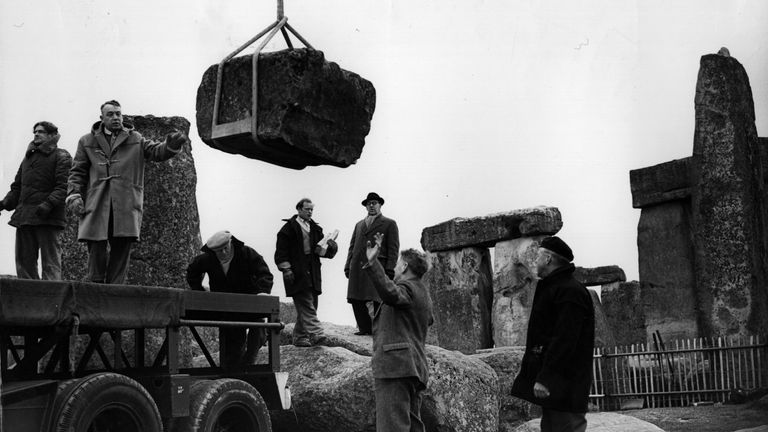The mysterious origins of Stonehenge’s giant sarsen stones have finally been uncovered.
A sample of one of the megaliths taken by a maintenance worker in 1958 has revealed the 20-tonne stones come from West Woods – just 15 miles away from the site, near Marlborough.
Robert Phillips worked for a Basingstoke-based diamond cutting business that was employed to reinforce one of the upright stones with metal rods more than 60 years ago.
While he was working there, he took a core sample and kept it for himself – taking it with him when he emigrated to the US.
It stayed there largely unknown for six decades before he expressed a wish for it to be returned to the UK on the eve of his 90th birthday.
Experts have long suspected the sarsens came from the Marlborough Downs, but could never be certain.
But now the sample has been returned, non-destructive X-ray tests have traced them back to West Woods, according to a study published in the journal Science Advances.
The core was cut up and sampled for its chemical composition and compared with samples of sarsen boulders in 20 areas stretching from Devon to Norfolk, including six in the Marlborough Downs to the north of Stonehenge.
The analysis concludes that stone 58 – which the core was taken from – and therefore the majority of the sarsens, were mostly likely from around 15 miles north of the stone circle on the edge of the downs.
English Heritage’s Susan Greaney said it was a “real thrill” to track down the area that the builders of Stonehenge sourced their materials from in 2500 BC.
She added: “We can now say, when sourcing the sarsens, the overriding objective was size – they wanted the biggest, most substantial stones they could find and it made sense to get them from as nearby as possible.
“Now we can start to understand the route they might have travelled and add another piece to the puzzle.”
Professor David Nash, of the University of Brighton, who led the research, thanked the Phillips family for returning the sample.
The word sarsen, used to describe the larger stones that form the shape of Stonehenge, is believed to originate from Saracen – a term used to describe an Arab or Muslim person around the time of the Crusades – but later went on to refer to anything non-Christian.
Stonehenge has long been associated with Pagan rituals and hosts solstice and equinox events every year.
This year 3.6 million people tuned in to a livestream of summer solstice while the site was closed due to coronavirus restrictions.


